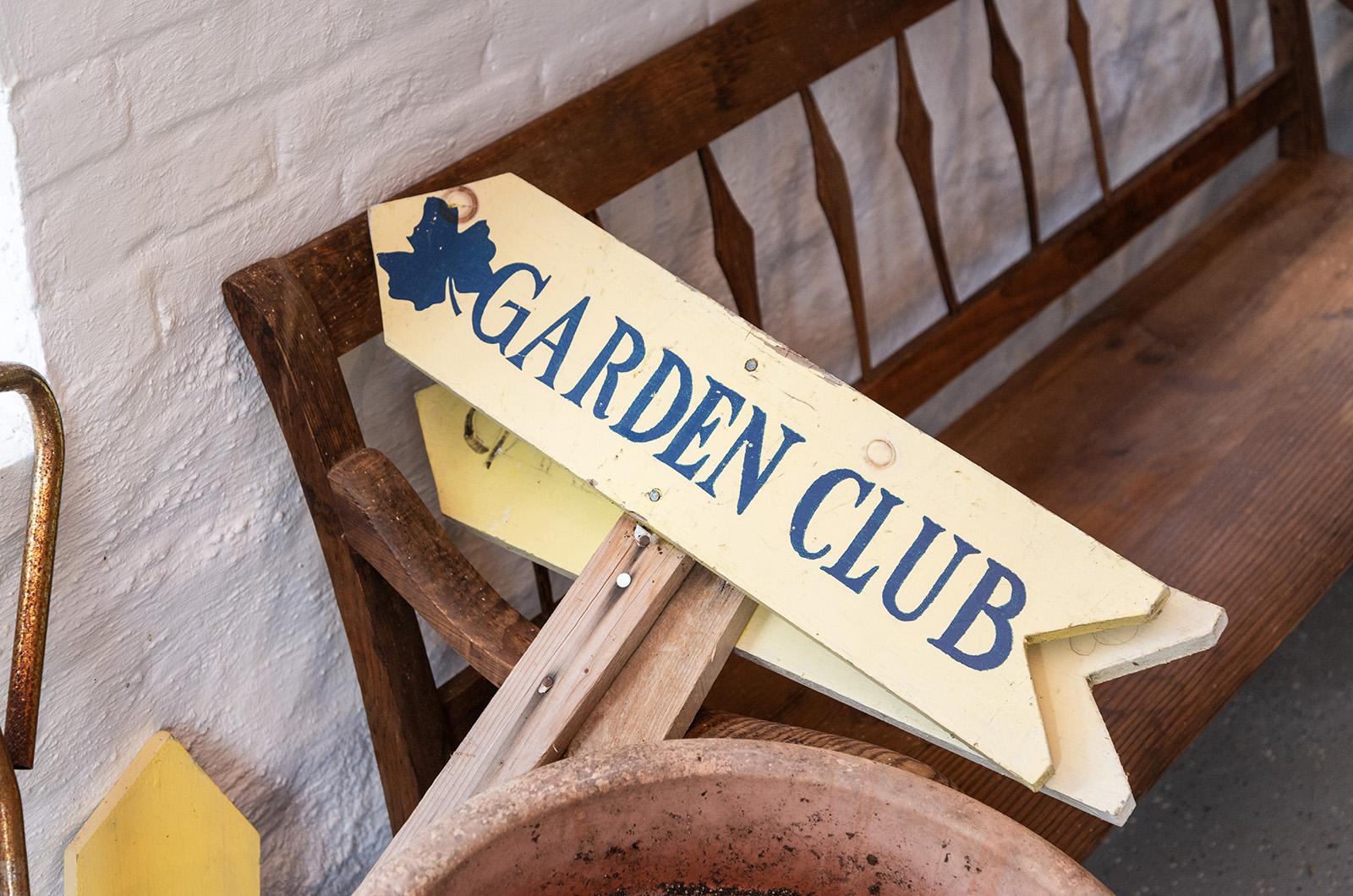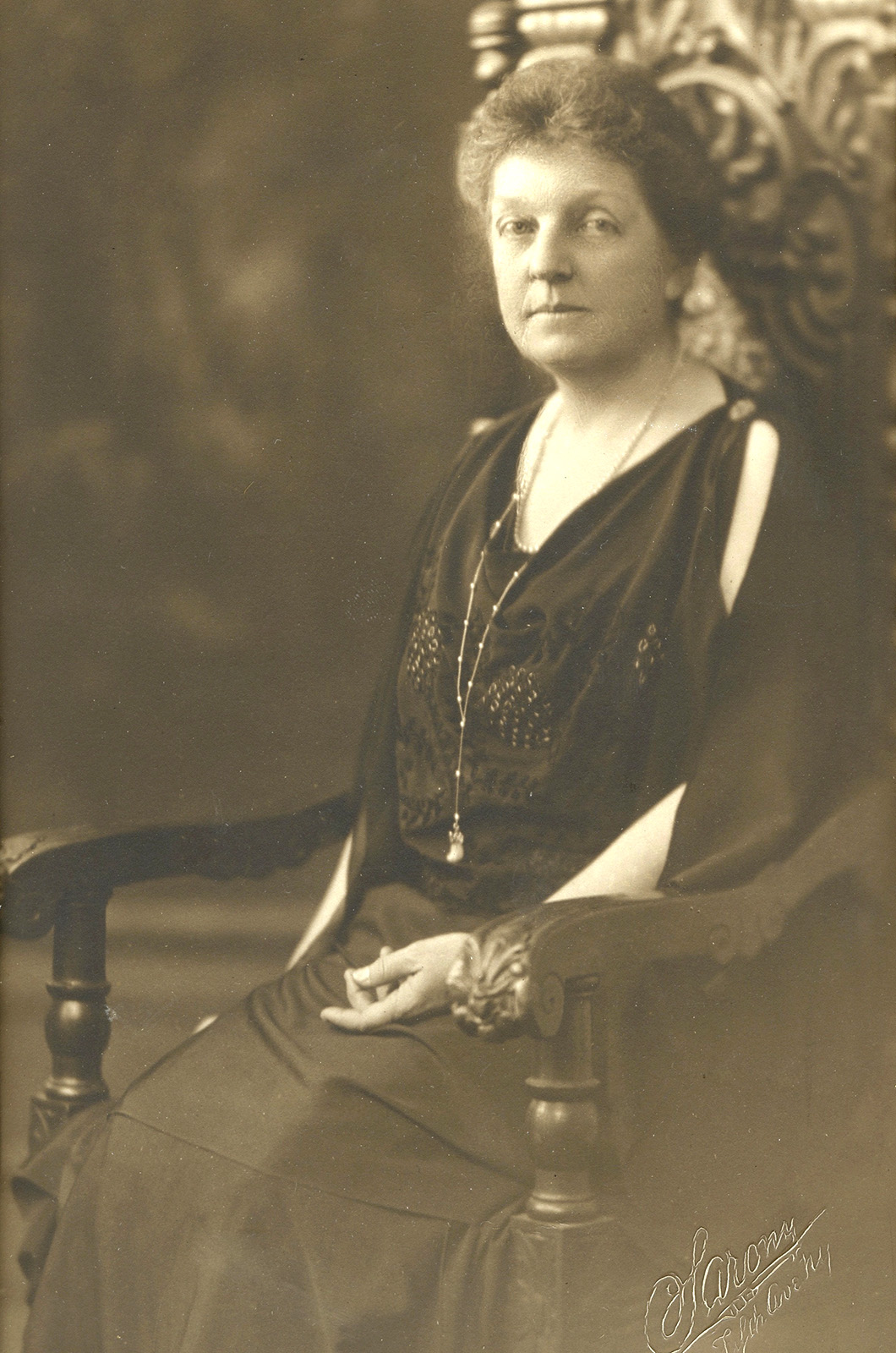This summer, the Martha’s Vineyard Garden Club will be commemorating their centennial and honoring their founder, one of the early conservationists of the Island, Agnes D. Meikleham (1869-1953, pronounced “Meek-lam”).
Looking back at her achievements, it is no exaggeration to claim that her many crusades played a significant role in the evolution of Martha’s Vineyard as we know it today. From the time she moved to Edgartown in 1908, the sight of dumps on the lovely beaches, damage to the trees and hedgerows and loss of historic buildings made her determined to protect and conserve the beauty of the Island.
Around 1920, Mrs. Meikleham was dismayed to hear that the two stately elm trees on Edgartown’s Main street were in jeopardy of being cut down since they made building the basement of the new movie theatre difficult. She sat on the curb by those elms for much of two days with a petition to save the trees. She succeeded.
Mrs. Meikleham also spoke out when many trees were spoken of as a “menace to life” and there were even rumblings that the Giant Pagoda tree was “a danger” and should be cut down and used for firewood.
“May Martha’s Vineyard escape the results of such thinking,” she urged in the Gazette.
Knowing she was an avid gardener, it was natural for a group of women in Edgartown who wanted to start a garden club to turn to her. Mrs. Meikleham agreed to founding the club in 1924 and to be its president only if the whole Island were to be represented. She stipulated that the club must be “a constructive civic force and not just an excuse for pink teas and purple feathers.”
The Club’s concern was to preserve the Island’s natural beauty, its trees, wildflowers and birds. Later, she admitted, “I harped so endlessly about it that ‘Our Island is Our Garden’ became the motto of the club,” as it remains today.
One area the club tackled was putting a stop to the destructive hacking of trees along the Island’s roads. With Mrs. Meikleham leading the charge, they succeeded in convincing the tree wardens to use a more sensitive approach to pruning, allowing the wild growth and natural hedgerows to be conserved, thereby making the Vineyard famous for its attractively green roadsides.
Mrs. Meikleham and the club also turned their energies full force to the eradication of pests damaging the trees, including tent caterpillars and gypsy moths. By enlisting school children to gather the nests or by loaning out sprayers to the towns, they achieved significant results.
In 1928, the club raised money to bring an expert from Harvard Medical School to visit the Island and explore ways to reduce the tick population, another project ahead of it time.
Mrs. Meikleham was also the powerhouse behind a critical campaign to ban billboards, which were sprouting up to advertise such products as cigarettes and utilities. Even “some very obnoxious political posters appeared like a rash,” she wrote in 1938. In a club yearbook, she described one oversized sign with its “baleful electric eyes to prevent it being forgotten even through the obliterating darkness.”
Undaunted, Mrs. Meikleham cajoled all the club members to boycott any national or local business that advertised with billboards. Some members had to refrain from buying their favorite brand of cigarettes. Despite difficulties, the Garden Club succeeded when it was finally accepted that billboards were indeed ruining the charm of the Island. Their lasting impact was felt as late as 1974, when the crew of Jaws was told firmly by an officer of the club that they only had permission to erect and film the large “Welcome to Amity” sign for a 24-hour window, or else.
Even the lack of hot-dog stands along State Beach in Oak Bluffs is largely due to Mrs. Meikleham, who first solicited the state’s protection of the popular beach.
During the Depression, the Vineyard Gazette made the public aware that the old stone walls up-Island were being sold and taken away to use for building bridges. Mrs. Meikleham and the Garden Club members bemoaned their removal and worked hard to prevent any further destruction. Due to their efforts, we are still able to admire the surviving stone walls as we drive along up-Island roads today.
In 1938, Mrs. Meikleham noticed worrying activity around the early 19th century Old Mill in West Tisbury and discovered that it was to be demolished. Once more, Mrs. Meikleham couldn’t stand by and do nothing. She and her follow officers managed to rent the building with an option to buy it later, thereby preserving this historic landmark and making it their clubhouse in 1942, as it remains today.
Given her harborside address, one might assume Mrs. Meiklham led an easy life with free time to devote to activism. Her private life, however, was marked by the death of her youngest daughter and financial hardship. In the late 1930s, after years of fundraising for good causes and having an instinct to “remove clothes down to her shimmy shirt to pass it onto someone else less clad,” Mrs. Meikleham found herself in need. It was only her daughter’s enterprising efforts to create a mail order business selling jams, jellies and cakes that allowed her family to stay in their beloved home with its cherished garden. Such troubles would have slowed down, if not stopped, another person, but Mrs Meikleham continued her tireless civic leadership.
Henry Beetle Hough, former publisher of the Vineyard Gazette, was a friend and admirer of Mrs. Meikleham. When he spoke at the 25th anniversary celebration of the Garden Club, Mr. Hough noted that there were many cartoons spoofing garden club ladies. But he was resolute in acknowledging that this stereotype in no way fit the Martha’s Vineyard Garden Club. Mr. Hough fully credited them for their dedication to shaping the Island as it had become, free of large signs, visible dumps, and thoughtless destruction of wild growth and trees.
The early focus of the club spread to many others, including Mr. Hough himself, who started the Sheriff’s Meadow organization in 1958/59. Today, many other organizations continue efforts to conserve the Vineyard’s natural beauty and historic buildings. As we know, their work is essential while overbuilding, over-hardscaping, destruction of native habitat, pollution of the ponds and natural erosion are changing the environmental health of Martha’s Vineyard. In honor of Mrs. Meikleham, and the valuable conservation and education activities of the Garden Club members over the last century, please attend these summer events to celebrate their efforts.
To raise funds for refurbishment of the Old Mill in West Tisbury and to celebrate the Garden Club’s 100th anniversary there will be several events held this summer. On July 25 there will be a garden stroll, starting on North Water street in Edgartown. On August 1, a gala centennial garden party will be held at Mrs. Meikleham’s former harborside garden. And throughout the summer, exhibits will be shown at the Martha’s Vineyard Museum and the Carnegie Heritage Center commemorating the Garden Club’s centennial.
For event details, go to marthasvineyardgardenclub.org.
Jane Bradbury lives in Edgartown. She is a member of the Old Mill committee of the Garden Club.





Comments (3)
Comments
Comment policy »